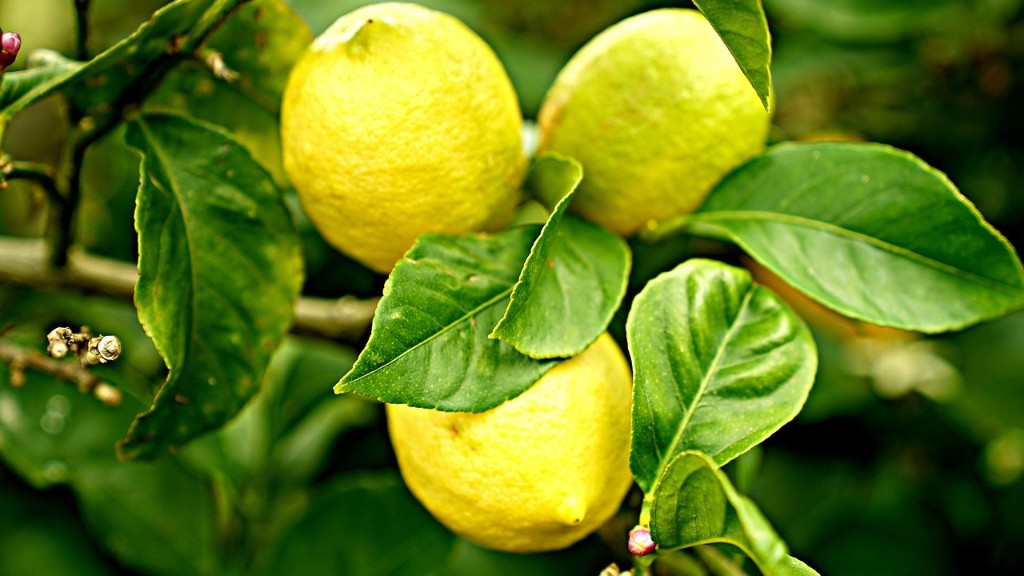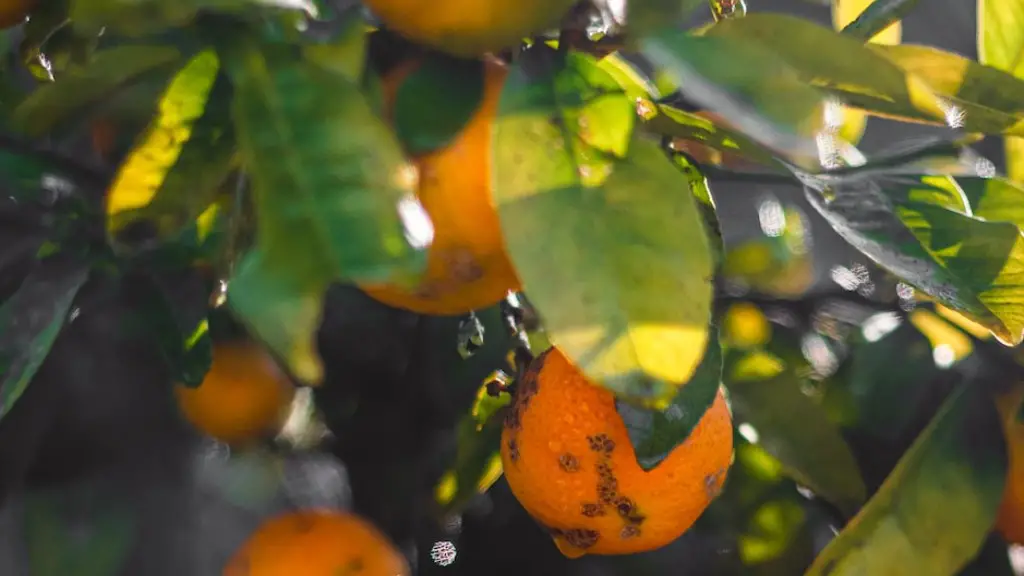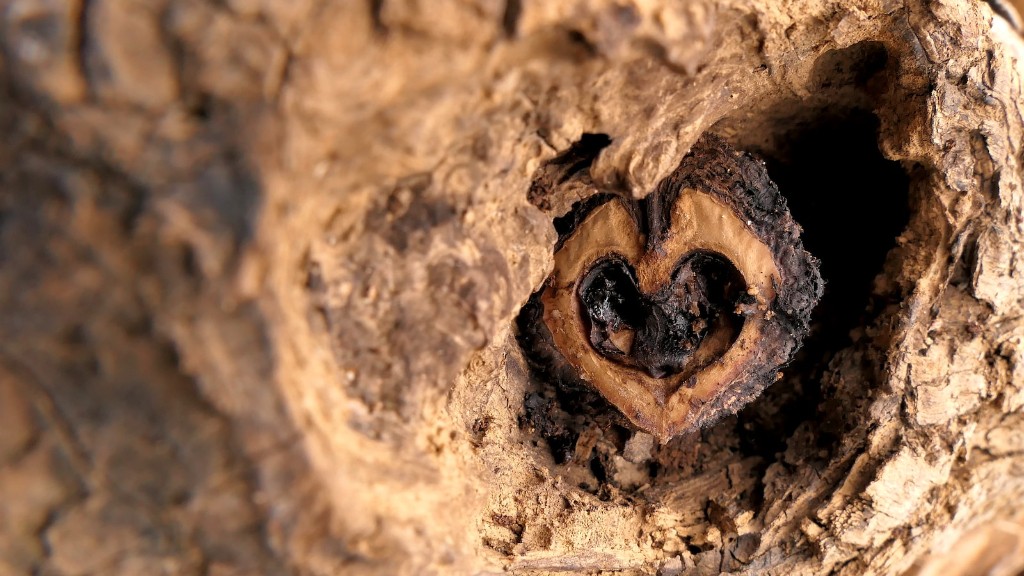As a lemon tree can produce a huge number of lemons, it is worth investing effort in learning how to get the most out of it. Here are some tips on how you can get more fruit from your lemon tree.
Firstly, it is important to ensure that your lemon tree is getting enough sunlight and water. Make sure that the soil is moist, but not saturated. Lemon trees need at least eight hours of sunlight a day and plenty of water during the warmer months, when it is actively producing fruit.
Secondly, lemon trees should be pruned regularly to keep them healthy and to help encourage production of fruit. Pruning involves removing any dead, diseased or weak branches and any fruit that will not ripen. Pruning also encourages the growth of new branches, which means more fruit.
Thirdly, fertilizing your lemon tree is important. Use a fertilizer formulated for citrus trees, which is high in nitrogen and potassium, and follow the instructions for application carefully. This will ensure that the tree has all the essential nutrients it needs to produce fruit.
Fourthly, another way to get more fruit from your lemon tree is to pick the fruit as soon as it is ripe. Lemons should be picked when they reach a nice yellow colour. Allowing the fruit to remain on the tree too long can cause it to shrivel and become inedible.
Fifthly, use sticky cards or traps around your tree to catch pests. These pests, such as aphids, can reduce the amount of fruit your tree produces. Make sure to inspect your tree regularly and take steps to remove any pests you find.
Sixthly, use companion planting in order to improve the growth and productivity of your lemon tree. Good companion plants that can be placed around your lemon tree include garlic, basil, onions, chives and oregano.
Seventhly, pay close attention to your tree and monitor it for signs of disease. Early detection and treatment can help to prevent serious damage and ensure that your tree continues to produce fruit. Common signs of disease include yellowing leaves, wilting, blotches and cankers.
Harvesting of Lemons
In order to get more fruit from your lemon tree, it is important to know the right time to harvest the fruit. If you wait too long to harvest, the lemons may become overripe, making them inedible. On the other hand, if you harvest too soon, the lemons may not be fully ripe. When lemons are ready to be picked, they will become a bright yellow colour, and their skin will be firm yet slightly soft.
In order to pick the fruit, it is best to use pruning shears or garden scissors so that you do not pull or twist off the branches. Cut off the fruit as close to the branch as possible, but make sure that you do not damage the branch itself. If you need to cut off a branch in order to pick the lemons, be sure to disinfect the tools you are using afterwards.
Another important aspect of harvesting lemons is to collect them before the birds and other pests get to them. As soon as the lemon is ripe, it becomes a delicacy for birds, bees, and even lizards. Therefore, it is best to check your tree regularly and pick the fruit as soon as it is ripe.
Ideally, the fruit should be harvested on a regular basis, about once or twice a week. This will ensure that the tree has a steady supply of energy and nutrients, and it will also minimize the risk of pests and disease.
When harvesting your lemons, it is important to remove any that are visibly damaged or overripe, as these can reduce the overall quality of the fruit. You can also peel off any small pieces of bark or other debris that may have gotten stuck to the fruit.
Sequential Harvesting of Lemons
Sequential harvesting of lemons is an important technique to ensure a longer harvest season, increase yields, and encourage your tree to produce more fruit. This technique involves allowing some lemons to remain on the tree while others are picked and then rotating which fruit stays on the tree and which is picked over time.
When harvesting lemons sequentially, it is important to monitor the size and colour of the fruit. If all the lemons are the same size and colour, it means that they were likely picked at the same time. By allowing the lemons to mature at different times, it will create a longer harvest season and result in more fruit.
To ensure that you are sequentially harvesting your lemons, inspect the tree and pick any that are showing signs of ripening. The size and colour of the lemon will be indicators of when it is ready to pick; when it is full size, with a yellow colour, it is time to remove it from the tree.
It is also important to only take what you need, so that the tree can keep producing more. When harvesting, you can either discard the lemons, or put them to use if you do not need all of them. Some ideas for using excess lemons from your tree include making lemonade, baking with them, or preserving them for later use.
Encourage Pollination of Lemons
Pollination is an important process for lemon trees to produce fruit. Ensuring that your tree is properly pollinated can improve yields and get more fruit from your lemon tree. Bees and other insects are responsible for pollinating the flowers and making sure that the pollen from one flower is transferred to another.
To encourage pollination of your lemon tree, it’s important to create a hospitable environment for the bees. Make sure that the area around your tree is free of herbicides and pesticides, and provide a water source, such as a small birdbath, to make sure the bees stay hydrated. You can also plant wildflowers and other flowering plants around your tree to encourage bees to visit more frequently.
Another way to encourage pollination is to introduce pollinators to your tree. Manually pollinating your lemon tree can be a tedious task, so you may want to consider hiring a beekeeper or purchasing bees to do the work for you. The active presence of bees in your garden can greatly improve pollination, resulting in more fruit.
Finally, if you live in an area where citrus greening disease is present, it is important to take steps to protect your tree from this deadly disease. This includes ensuring that the tree has proper nutrition, providing adequate water, using beneficial insects to keep pests away, and using appropriate sprays only if necessary.
Preparing Your Tree for Winter
Preparing your lemon tree for the winter is important in order to make sure that it continues to produce fruit throughout the year. It is important to prune and fertilize your tree before the cold weather arrives in order to ensure that your tree is healthy and can withstand the cold climate.
Pruning should be done in the fall, before the temperatures drop too low. Pruning should involve removing any dead, diseased, or weak branches, as well as any fruit that will not ripen. Pruning can promote the growth of new branches and encourage the tree to continue producing new fruit.
Fertilizing your tree before the winter months is also important. Use a fertilizer formulated for citrus trees, which is high in nitrogen and potassium, and make sure to follow the instructions when applying. This will ensure that the tree has all the essential nutrients it needs to thrive throughout the winter.
It can also be beneficial to cover your tree in the winter, especially if it is in an exposed location. Place a thick cloth or tarp over the tree, which can help to retain warmth and protect it from strong winds. Make sure to remove the cover once spring comes around, as it is essential for the tree to get plenty of sunlight and air circulation.
Finally, it is important to monitor your tree for signs of disease in the winter. If you notice any wilting, yellowing, or cankers, take action immediately in order to prevent serious damage and ensure that your tree produces more fruit in the future.




